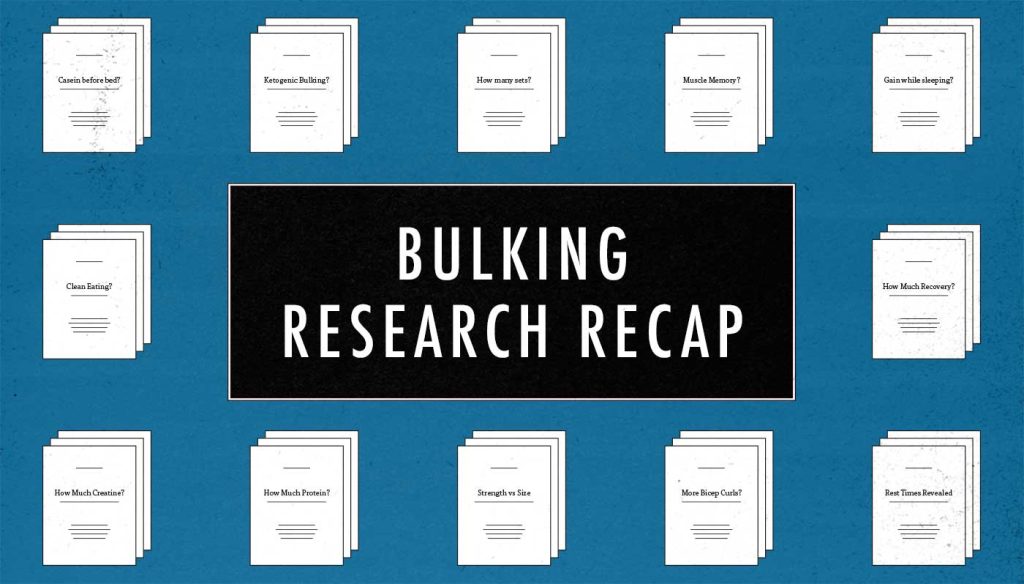
A Review of Interesting Muscle-Building Research for Skinny Guys
In this article, let’s take a closer look at some of the most interesting research that could help us ectomorphs, hardgainers, and skinny guys bulk up, including studies looking into:
- How important are bicep curls for building bigger arms?
- Does muscle memory really exist?
- How long should we rest between sets?
- Does doing more sets increase muscle growth?
- What happens if we bulk on a ketogenic diet?
- Are high-protein diets healthy?
- Does having casein for bed help with muscle growth?
- Are 5×5 workouts good for building muscle?
- Are 10×10 German Volume Training workouts good for building muscle?
- Are push/pull/legs splits good for building muscle?
- Which lifestyle intervention caused simultaneous muscle growth and fat loss?
All of those answers and more inside.
- Quick Bulking Study Summaries
- Does Muscle Memory Exist?
- Does Doing More Sets Yield More Growth?
- How Long Does it Take to Recover From A Workout?
- How Long Should We Rest Between Sets?
- Do We Need Isolation Lifts to Maximize Muscle Growth?
- Is German Volume Training (GVT) Good for Gaining Muscle Size?
- Are Push/Pull/Legs Workouts Good for Gaining Muscle Size?
- Our Muscles Grow Best When Challenged Under Stretch
- Trap Bar or Barbell Deadlift?
- Should We Pause Between Deadlift Reps?
- Are High-Protein Diets Healthy?
- How Much Creatine Should We Take Per Day?
- Does Taurine Help With Muscle Growth?
- Does Citrulline Malate Increase Muscle Growth?
- In-Depth Bulking Study Summaries
- Conclusion
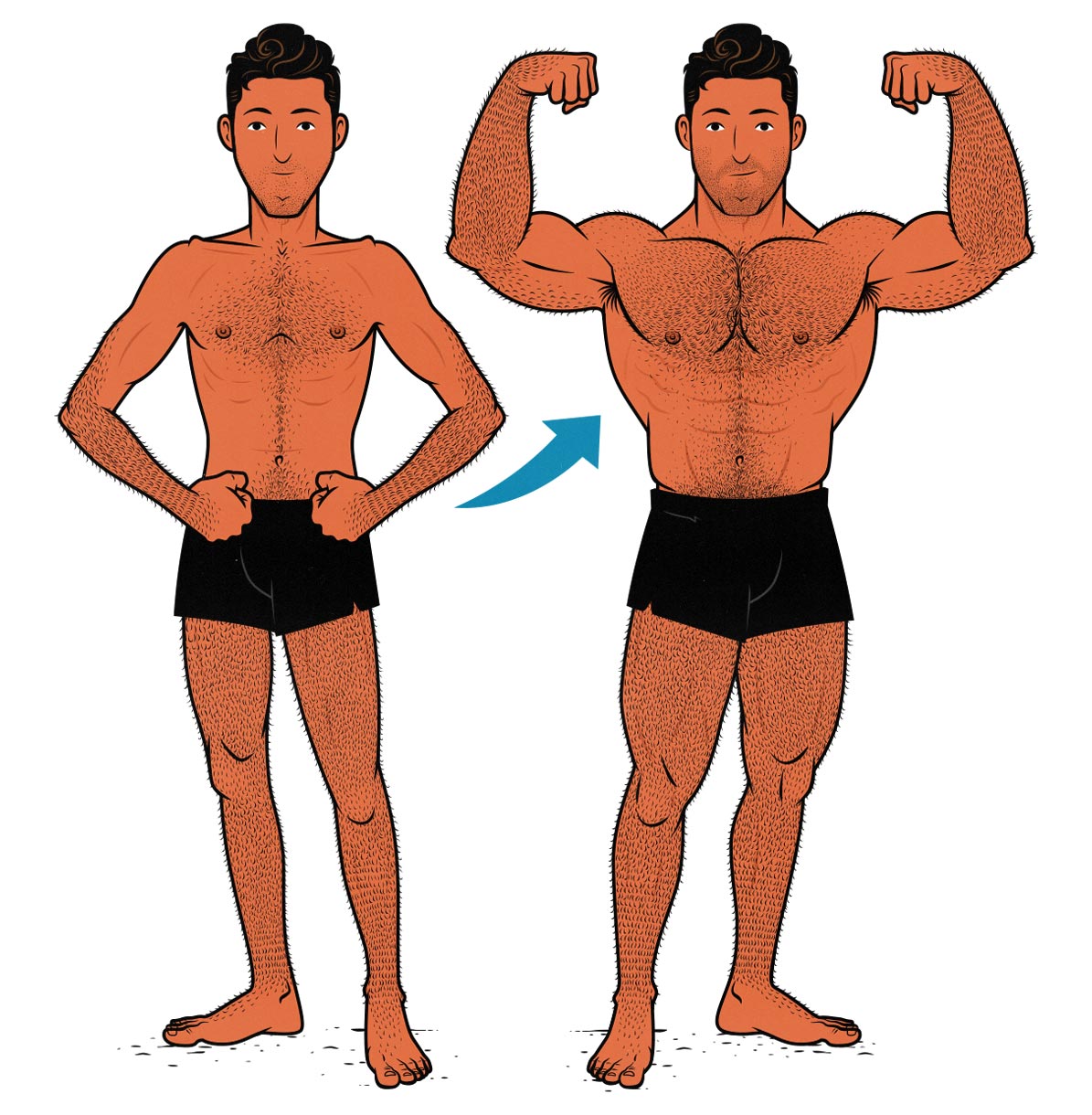
Quick Bulking Study Summaries
Does Muscle Memory Exist?
Muscle memory does exist. It’s much easier to regain lost muscle than it is to build new muscle, especially as an intermediate lifter. Another study has come out looking into the mechanisms of muscle memory, proving once again that it really does exist. When you gain enough muscle, new nuclei are added to your muscle fibres, and those new nuclei remain there for the rest of your life. Even as glycogen fluctuates with bodyweight changes, those new nuclei remain, making it much easier to rebuild any muscle that you lose.
For more, check out our article on muscle memory.
Does Doing More Sets Yield More Growth?
The more challenging sets we do per muscle group, the more quickly those muscles grow. This is the latest study from top researcher Brad Schoenfeld, PhD. There were no surprises here, but it adds to the body of evidence showing that the more sets you do per muscle group per week (volume), the more muscle you’ll build.
There’s some nuance to training volume, though. As we’ll cover later, strength training only stimulates about half as much muscle growth per set. Similarly, if we use very short rest times between sets, as is popular in bodybuilding training, the sets only stimulate about half as much growth.
For more, check out our article on training volume.
How Long Does it Take to Recover From A Workout?
After a hard workout, it can take 1–4 days to recover. A couple of studies showed that depending on what the lifts were, how heavy they were, and how many sets were done, the ideal amount of time to rest between workouts varied between 1–4 days (study, study). This doesn’t just factor in muscle soreness, but also how long the muscle growth stimulus lasts and how long it takes our muscles to regain their strength.
Most modern programs have us training each muscle group 2–3 times per week, which is perfect, but this is another nail in the coffin of those old triple split workouts where you do a push workout on Monday, a pull workout on Wednesday, and a leg workout on Friday.
How Long Should We Rest Between Sets?
If we want to build a maximal amount of muscle per set, we should rest at least two minutes per set. However, if we want to build the most muscle in the shortest amount of time, we can use shorter rest times but do more total sets. For instance, if you’re only doing four sets of the bench press, best to rest at least two minutes between each set. In that case, it might take ten minutes to finish all four sets. However, if after doing those bench press sets, you only have five minutes left to train your biceps, you may wish to do six sets of biceps curls in five minutes, using short rest times (or drop sets). Each set will stimulate less growth, but you’ll be able to make up for that with the short rest periods.
In this study, longer rest times between sets produced better muscle gains. This is because longer rest times allow you to regain more strength between sets, allowing you to lift more weight for more reps. (With enough rest, it’s common to do slightly better on your second set than your first.) Getting enough rest also improves lifting technique. This is important because the more practice you get lifting with good technique, the better your technique will become, causing this benefit to compound over time. This produces substantially better gains in both the short and long term. (Plus, if your goal is to gain muscle and strength, there’s no detectable benefit to short rest times anyway.)
For more, see our article on rest times for muscle growth.
Do We Need Isolation Lifts to Maximize Muscle Growth?
Yes, if we want to maximize muscle growth in all of our muscles, we need to do isolation lifts. For instance, the bench press is a good lift for bringing our chests close to failure, and when it does so, it challenges our chests in a stretched position, which is great for muscle growth. However, our triceps aren’t stretched or brought close enough to failure, and the long head is unable to fire properly because there’s too much movement in the shoulder joint (study).
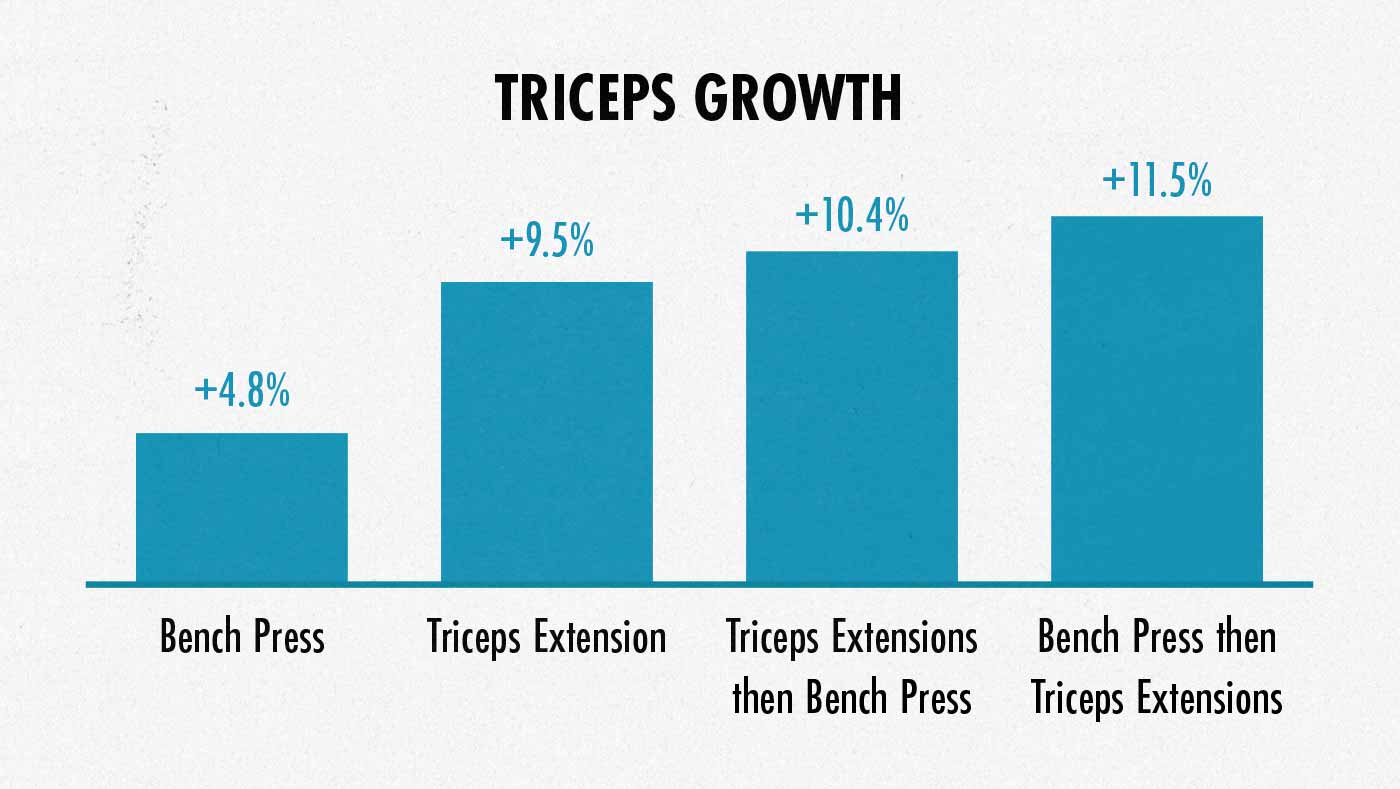
The solution to this problem is pretty simple. If we add in some overhead triceps extensions, we have a lift that brings our triceps close to failure, challenges them in a stretched position, and minimizes movement in the shoulder joint. With both lifts combined together, we get full triceps and chest development.
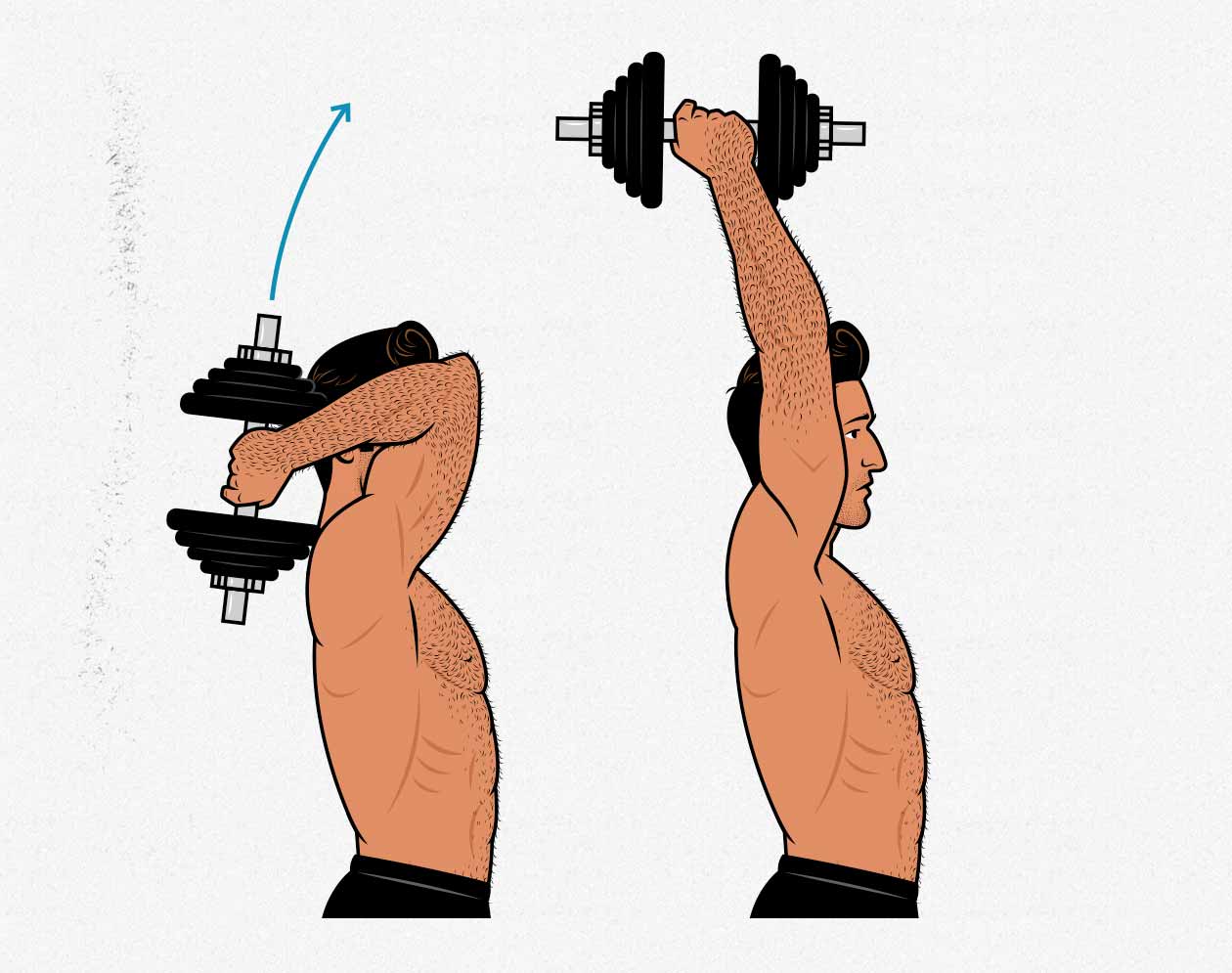
For another example, this study found that the group who added biceps curls after their compound lifts built bigger arms while bulking up. (It’s also worth noting that if a program doesn’t have chin-ups in it, it won’t do a good job of stimulating your biceps with compound lifts, either, reducing your bicep gains by even more.)
For more, see our article on isolation lifts for maximizing muscle growth.
Is German Volume Training (GVT) Good for Gaining Muscle Size?
German Volume Training (GVT) is a high-volume bulking method that involves doing 10 sets of 10 repetitions for every main exercise. To put that into context, a more traditional approach to hypertrophy training is to do 3–6 sets per exercise. As a result, a traditional bodybuilding workout might have 5 sets of 10 repetitions. Half the training volume.
There are two high-quality studies that directly compare German Volume Training against traditional hypertrophy training.
- The first study had half the participants doing 10 sets of 10 repetitions, the other half doing 5 sets of 10 repetitions. After six weeks, their muscle growth, fat gains, and strength were measured. Both groups gained muscle and strength, with hardly any differences between groups. However, the group performing just 5 sets gained ever-so-slightly more size and strength, so if anything, doing half as many sets yielded more muscle growth.
- The second study found extremely similar results. Again, both groups gained muscle size and strength, but the differences between groups were small. However, the German Volume Training group started to lose muscle mass in their legs after the sixth week, perhaps because they weren’t able to properly recover between workouts. Plus, the group doing fewer sets saw greater increases in their bench press strength. So again, the 5-set group got better results than the 10-set group.
In both cases, the researchers concluded that doing 4–6 sets per muscle group was enough to maximize muscle growth, and that continuing to do sets after that had no further benefit.
So, no, German Volume Training isn’t ideal for gaining muscle size. A more traditional approach to hypertrophy training is better.
For more, see our article on German Volume Training.
Are Push/Pull/Legs Workouts Good for Gaining Muscle Size?
Push/Pull/Legs splits are a popular training split for building muscle. The idea is that we divide up our training into a chest day, back day, and leg day. Each workout, we blast the target muscles into oblivion with a high training volume. But since we’re only training our muscles once per week, those muscles have plenty of time to recover between we need to train them again.
Brad Schoenfeld, PhD, conducted a study comparing a push/pull/legs split against a full-body split, finding that the full-body workout routines produced significantly more muscle growth. He suspected that this was because a workout only stimulates muscle growth for 2–3 days, at which point we can stimulate a new wave of growth. If we’re waiting a full week between workouts, we’re spending less than half the week growing. But if we train our muscles every 2–3 days with full-body workouts, we can grow all week long.
So, although push/pull/split routines can indeed stimulate muscle growth, they aren’t as good as workout routines that train our muscles with a higher frequency. As a result, if you’re only working out 2–4 days per week, it’s probably better to do full-body workouts.
For more, see our article on Push/Pull/Legs workout splits.
Our Muscles Grow Best When Challenged Under Stretch
A recent meta-analysis found that challenging our muscles in a stretched position stimulated nearly three times as much muscle growth as challenging them in a contracted position:
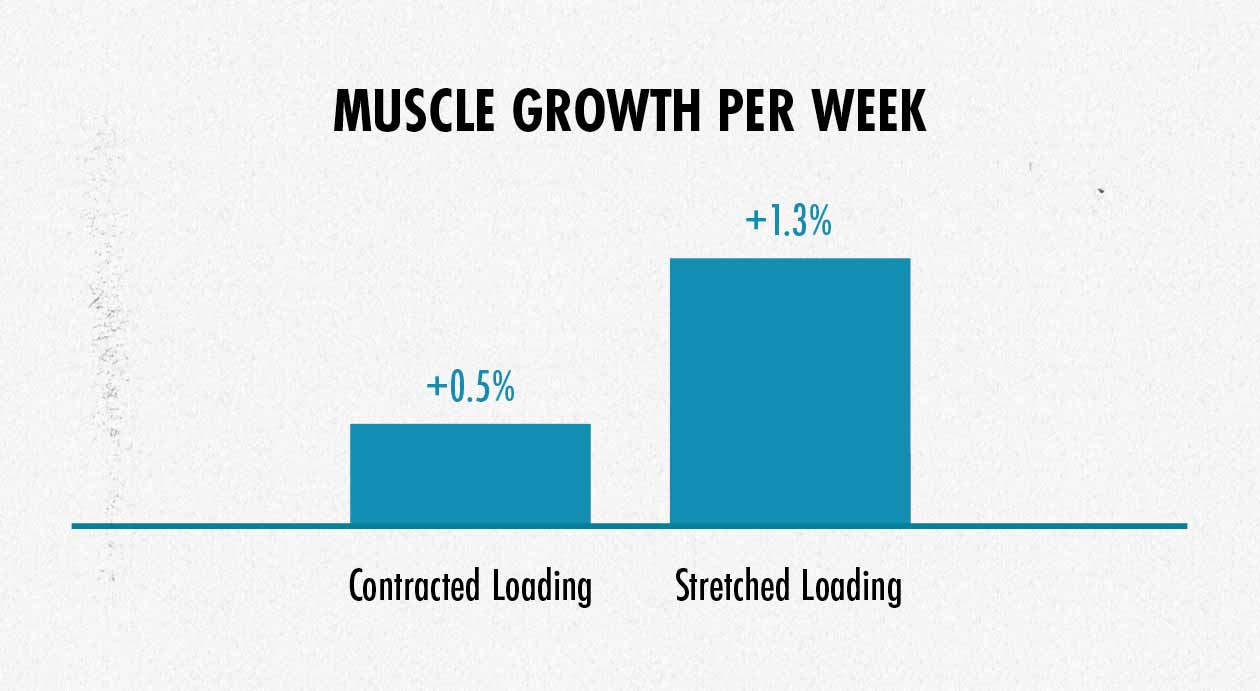
This is one reason why the bench press is so good for building our chests, why front squats are so good for growing our quads, and why conventional deadlifts are so good for bulking up our hips. It’s also why resistance bands aren’t as good as free weights for stimulating muscle growth.
For more, see our article on optimizing strength curves for hypertrophy.
Trap Bar or Barbell Deadlift?
The trap-bar deadlift might be the best deadlift variation for bulking up. This study found that when guys switched from a conventional deadlift to a trap-bar deadlift, they were able to lift 6% heavier, they produced force more steadily throughout the lift, and there was less stress placed on the lower back.
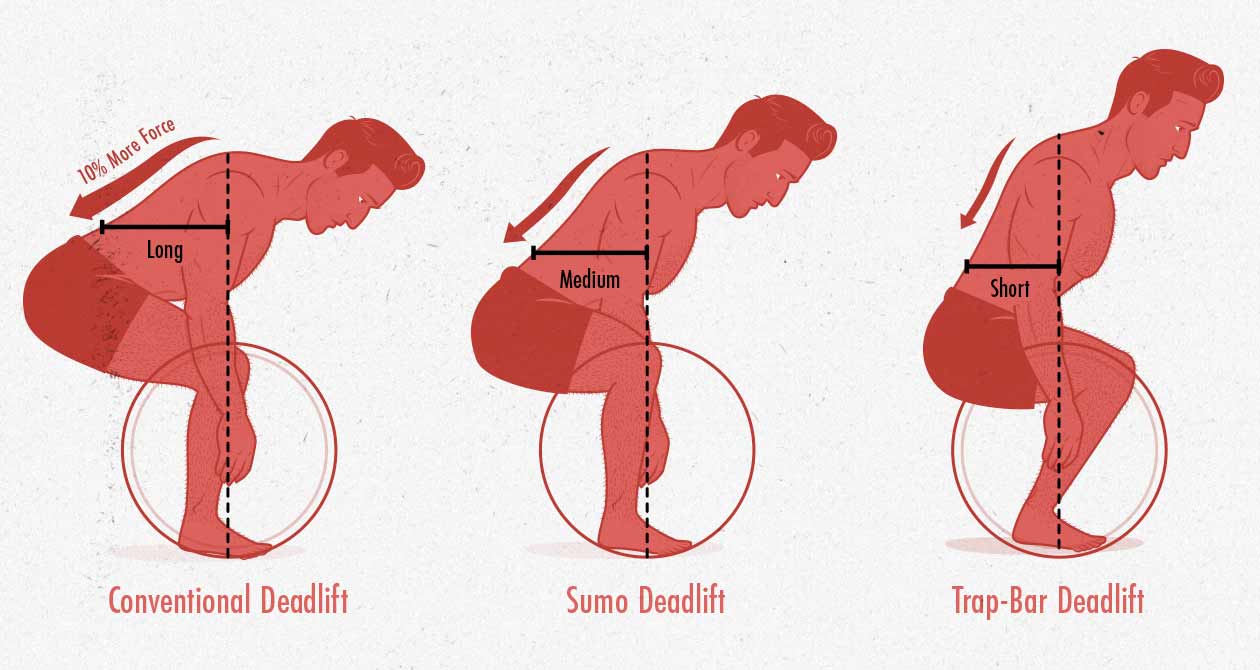
On the other hand, most of us deadlift with the goal of increasing the size and strength of our spinal erectors, and so stress on the muscles in our lower backs can be a good thing. Not only will it improve our aesthetics, training our lower backs can protect against lower back injuries.
Furthermore, trap bars are only ideal for the one exercise—the trap-bar deadlift. Adding them to a barbell home gym can be expensive and take up a lot of extra space. Instead of a trap bar, most people choose to get a curl-bar (aka EZ-Bar) as their second barbell. It’s cheaper, doesn’t take up as much space, and can be used for dozens of different exercises.
So whether you should deadlift with a standard barbell or trap bar all depends on your equipment and your circumstances.
For more, see our article on deadlifting for muscle growth.
Should We Pause Between Deadlift Reps?
You’ll gain more strength if you come to a full “dead” stop between deadlift reps. This study found that deadlifting from a dead stop resulted in the lifter needing to exert 64% more force. This makes the lift harder, but also way better for gaining size and strength. Resetting between each rep also allows you to get back into an ideal pulling position, making the lift safer, and it allows you to get plenty of practicing pulling singles, which will improve your coordination.
Another way to improve the growth stimulus from deadlifts is to lower the barbell down slowly instead of dropping it. It makes the lift harder, yes, but it increases the growth stimulus. So if you’re training for hypertrophy, lower slowly and let the bar settle.
For more, see our article on deadlifting for muscle growth.
Are High-Protein Diets Healthy?
A new study by Jose Antonio came out showing no adverse effects when consuming a diet that’s extremely high in protein. On the downside, though, the study followed guys eating 1.5 grams of protein per pound body weight per day for two years, and they didn’t gain any muscle mass. Two years of bulking and not a single pound of muscle gained. Ouch. Goes to show that protein is just one factor. The quality of your workout program, your calorie intake, and your recovery are also incredibly important if you’re trying to bulk up.
For more, see our article on how to bulk the healthy way.
How Much Creatine Should We Take Per Day?
Even a small daily dose of regular creatine can fully saturate our muscles. This study found that guys were able to fully saturate their muscles by taking just three grams of regular creatine monohydrate each day, which just costs a few cents per serving. This proves once again that there’s really no point in buying fancy creatine or doing those 20-gram-per-day loading periods. Just take your small daily dose and enjoy the extra muscle (and health benefits).
For more, see our article on creatine and muscle growth.
Does Taurine Help With Muscle Growth?
Taurine isn’t a good pre-workout supplement. This study found that not only does taurine fail to help, it actually worsens lifting performance. It doesn’t reduce lifting performance by very much, so it doesn’t really matter, but still, not the best news for guys who have energy drinks before working out. Even regular coffee might be better (especially with an extra shot of espresso).
For more, see our article on the best bulking supplements.
Does Citrulline Malate Increase Muscle Growth?
Citrulline malate isn’t proving to work very well. Citrulline malate initially had some promising results, resulting in a lot of hype. It was added into a ton of popular pre-workout supplements. However, the early promising results aren’t being replicated by follow-up studies, including this new one. Seems like citrulline malate might not be so great after all? Time will tell, but it’s not looking good.
For more, see our article on the best bulking supplements.
In-Depth Bulking Study Summaries
Okay, now let’s go in-depth on the four studies that I thought were particularly valuable. It’s not that these findings are all that shocking (except for the last one), but rather that they clarify little details that weren’t very clear yet. So what I did was quickly summarize the current body of evidence (all the research published in the decades before 2018), and then added in how these new studies fit into that.
How Does Sleep Affect Muscle Growth & Fat Gains While Bulking?
This meta-analysis found that sleep continues to be one of the most important bulking factors, rivalling even protein intake. If you can get enough good sleep every night, you’ll gain more muscle, more strength, less fat, less chronic stress, and better overall health.
It gets even more interesting if we look at more recent research. For instance, even just by learning how to get better sleep, we can increase our rate of muscle growth by as much as 30%:
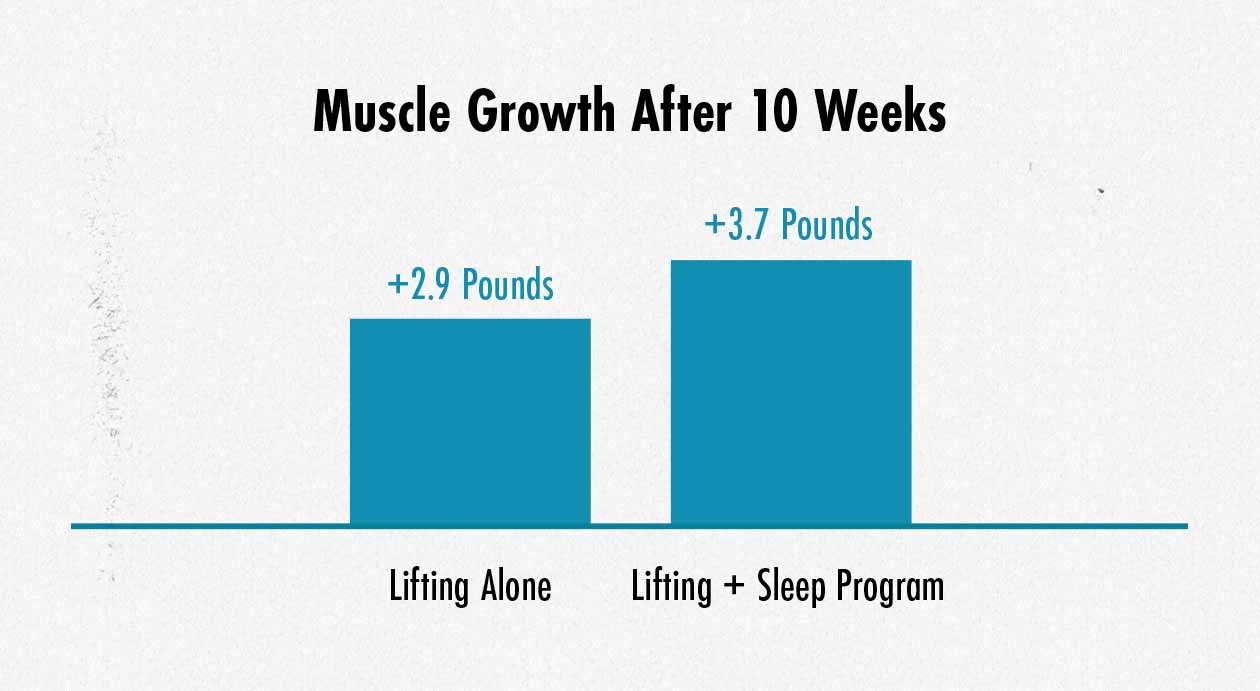
Perhaps even more remarkably, sleep has a strong nutrient partitioning effect, causing us to invest more calories into muscle growth and fewer into fat storage. So much so that the study participants who improved their sleep lost fat while bulking:
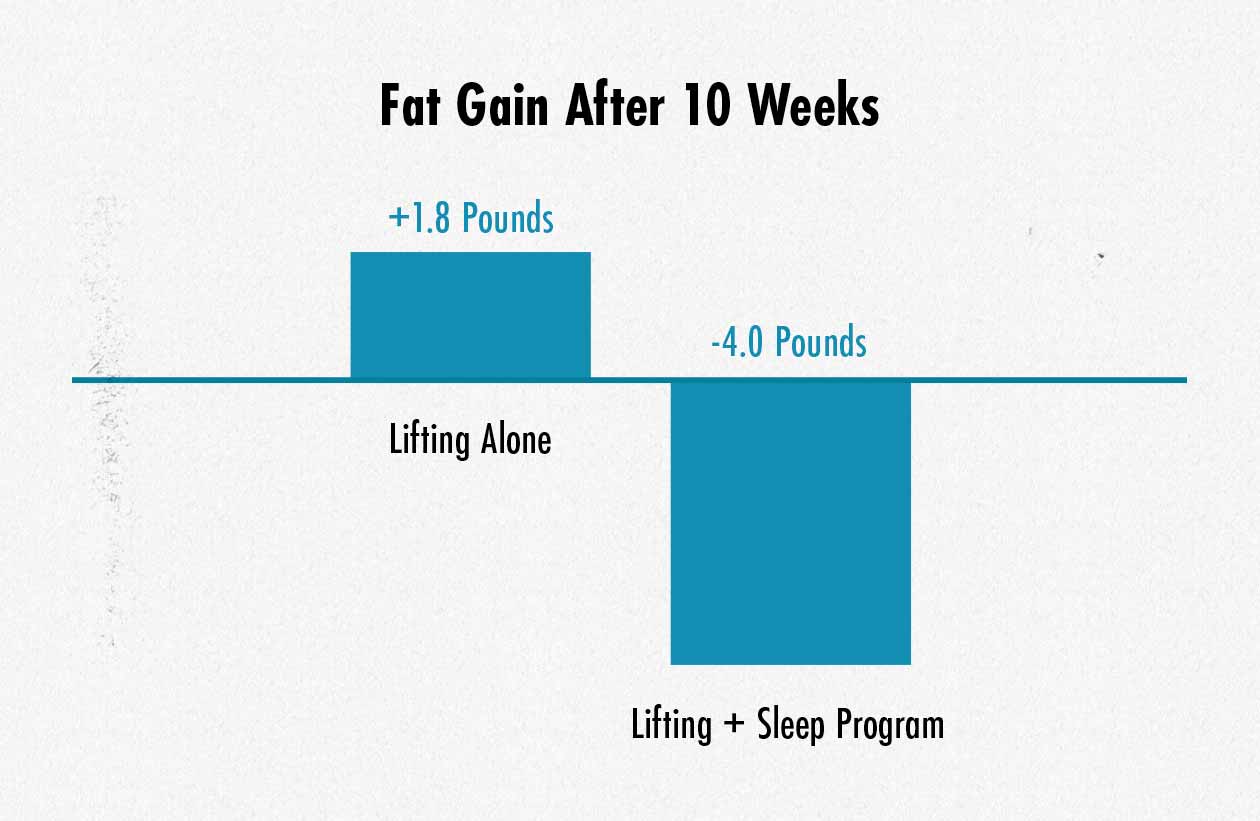
This effect also seems to be confirmed by research into melatonin supplementation. Because having enough melatonin in our bodies improves sleep, it increases muscle growth and reduces fat storage.
We have a chapter in our Bony to Beastly Bulking Program about how to improve your sleep for improved nutrient partitioning, but for a quick primer, see our article on improving sleep.
Does Having Casein Before Bed Increase Muscle Growth?
Yes, having casein before bed can sort of increase muscle growth. But not because casein is particularly anabolic, only because it gives us a good, easy source of nighttime protein that won’t interfere with our sleep.
Casein is a protein found in some dairy products, such as cottage cheese. You can also buy casein protein powder, which is pretty popular among bodybuilders. Like whey protein, casein has a great mix of amino acids for building muscle, but whereas whey digests extremely quickly, casein digests extremely slowly. You’d think that casein, as the slow-burning protein, would be great to have before bed. That way while you’re sleeping, your body is slowly digesting the casein, turning it into muscle mass. Theoretically, this makes sense.
The next step was to test this hypothesis, and at first, the research seemed promising—kind of. In 2012, the first study did find that adding a casein protein shake before bed boosted muscle growth. However, muscle growth only increased compared to people who didn’t have any sort of protein shake whatsoever. All this study proved was that it’s important to get enough protein while bulking, which is no surprise to anyone.
This led to a follow-up study by Jose Antonio. He gave one group a casein shake before bed, and he gave the other group a protein shake earlier in the day. Same overall protein intake. Perfect. And this time there was no difference in muscle growth. But here’s the problem, neither group gained muscle. The participants were seasoned lifters, so just the workout program alone wasn’t enough to spur on any muscle growth, and they weren’t eating in a calorie surplus, so they didn’t gain any weight overall. It’s not surprising that the bulking program failed—they didn’t take into account the fundamentals of muscle growth. This shows that pre-bed casein isn’t magic, but it doesn’t say much about how effective it would be in the context of an effective bulking program.
That brings us to this new 2018 study. In this study, they split the participants into two groups. The first group got a carb shake during the day and a casein shake before bed. The second group got a casein shake during the day and a carb shake before bed. Both groups consumed 0.8 grams of protein per pound bodyweight per day, which is great. Only the timing of the casein different. And they used a program that was actually effective for bulking up. Now we’re talking.
So what happened? Both groups gained a bunch of muscle mass and strength. Following a good lifting program, eating a good bulking diet, and having enough protein each day produced awesome gains in both groups. In fact, the group having the extra protein during the day and the carbs before bed got better muscle gains than the pre-bed casein group. This difference wasn’t significant though—probably just a fluke. This again confirms that casein isn’t magic and that it’s the fundamentals that produce awsome muscle growth.
However, keep in mind that if having some casein before bed helps you get the protein and the calories that you need to bulk up, absolutely go for it. Cottage cheese is still a great muscle-building snack to have before bed. There’s just no need to buy special casein protein powder and there’s no need to intentionally have it at night. Also keep in mind that this study doesn’t prove that there’s no benefit to pre-bed casein, just that there’s no statistically significant benefit. There could be a tiny benefit that the study couldn’t detect. Hard to say. But don’t worry about it either way.
Now the question becomes why? All of the protein researchers expected that having casein before bed would be effective. Why didn’t it produce more muscle growth?
The researcher Eric Helms, PhD, makes the point that when we’re bulking, our digestive systems are pretty much running at capacity 24/7 anyway. If you’re eating a good bulking diet, chances are that you have plenty of protein digesting all night long anyway (along with carbs, fats, fibre, vitamins, minerals, etc). This is why we build a ton of muscle while we sleep with or without the casein. If Dr Helms is right, this would mean that casein before bed might still be viable while cutting, just not while bulking.
Should We Bulk Clean or Dirty?
Previous research, such as this 1991 study, found that clean eating places so many restrictions on food choices that the diet tends to become unbalanced. Perhaps the participants eat plenty of leafy greens, which is good, but they have too much fibre, which is bad. Maybe they find themselves craving chocolate covered peanuts because their body is looking for a good source of zinc, but they resist that craving because chocolate peanuts are “dirty,” creating a zinc deficiency.
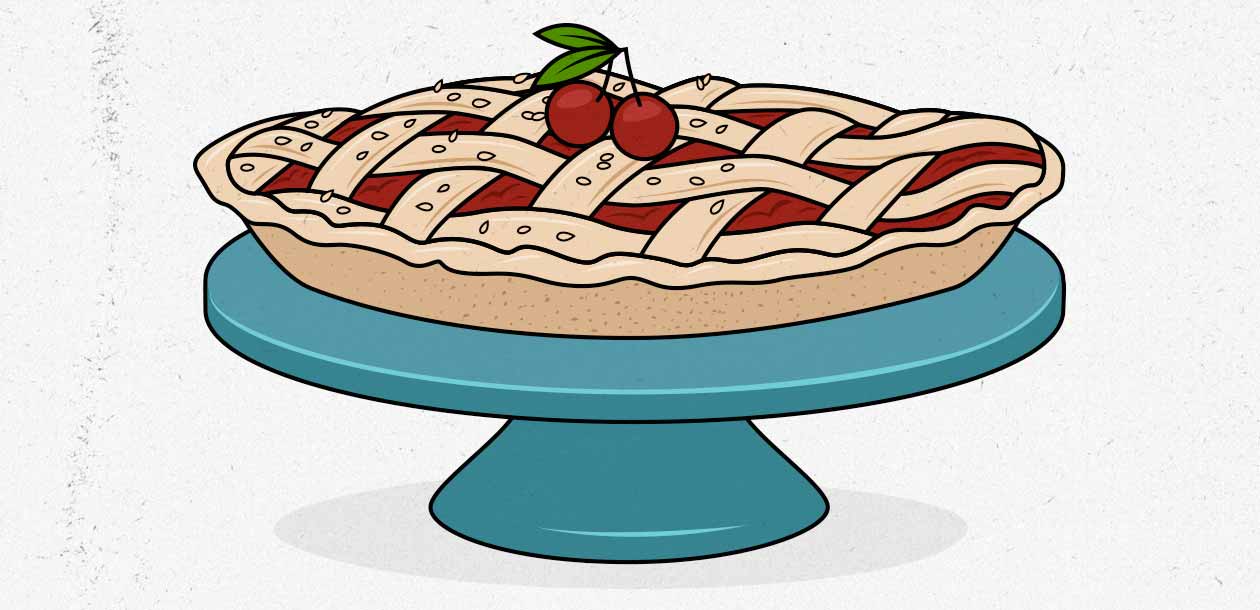
With a flexible dieting approach, we tend to eat a wider variety of foods—including junk foods—which paradoxically gives us a more balanced intake of nutrients overall. There was this one old study that found that people who were given unrestricted access to a full refrigerator were able to prevent deficiencies by simply trusting their cravings. You could say that when it comes to your gut, you should trust your gut. Heh.
This more unrestricted approach to food makes even more sense while bulking, given how many calories we’re consuming overall (more overall vitamins and minerals), and given how easy it is to run into digestive problems from eating too much fibre (gas, bloating, etc). If we casually aim for a diet that’s around 80% whole foods, we’ll still be getting more fibre and micronutrients than we need for our health, our diet will be easier to digest, and we’ll have an easier time eating more calories. (Dessert is a very easy source of calories.)
This has led most of the top researchers, such as Dr Eric Helms, to recommend bulking up using a more flexible approach. It’s more enjoyable, and it’s also healthier. He just adds the caveat that even flexible dieters should aim to eat 80% whole foods and at least three servings of fruits and vegetables each day.
Okay, so that’s the lay of the land. In this new study, the researchers wanted to challenge this idea. They hypothesized that since strict dieters would be eating more whole foods and less sugar, they would get superior results.
To test this hypothesis, the researchers split bodybuilders preparing for a competition into two groups. Both groups ate the ideal amount of protein, carbs, and fat, but the first group ate a strict diet (clean) whereas the second group had no dietary restrictions (flexible).
Bodybuilders who are preparing for a competition cut hard. They enter into diets that are extremely low in calories. That makes it almost impossible to eat enough vitamins, minerals, and fibre. If there was ever a time when you’d expect a clean diet to pay off, you’d expect this to be it… right?
On the bright side, both groups lost fat. But on the dark side, both the clean eaters and the flexible dieters were deficient in a dozen different nutrients. If anything, this study just shows that cutting down to 6% body fat is almost impossible to do while staying healthy. The typical bodybuilder on stage isn’t the picture of perfect health, they’re an extreme athlete making extreme sacrifices to accomplish their extreme goals.
Anyway, when it comes to both bulking and cutting, Dr Helms’ advice is a good rule of thumb: aim to eat around 80% whole foods.
For more, see our article on clean versus dirty bulking.
Are Ketogenic Diets Good for Bulking?
This study on ketogenic bulking is really interesting. To set the stage, a ketogenic diet is a very-low-carb diet. When eating a ketogenic diet, because of how few carbs we’re eating, our bodies learn how to get energy from fat instead. This means that we can get more energy from our body fat, yes, but it also means that we get more energy from the fat we’re eating. After all, following a ketogenic diet means eating a lot of fat. Regardless, the prospect of burning more fat has made ketogenic diets popular with people who are trying to lose fat.
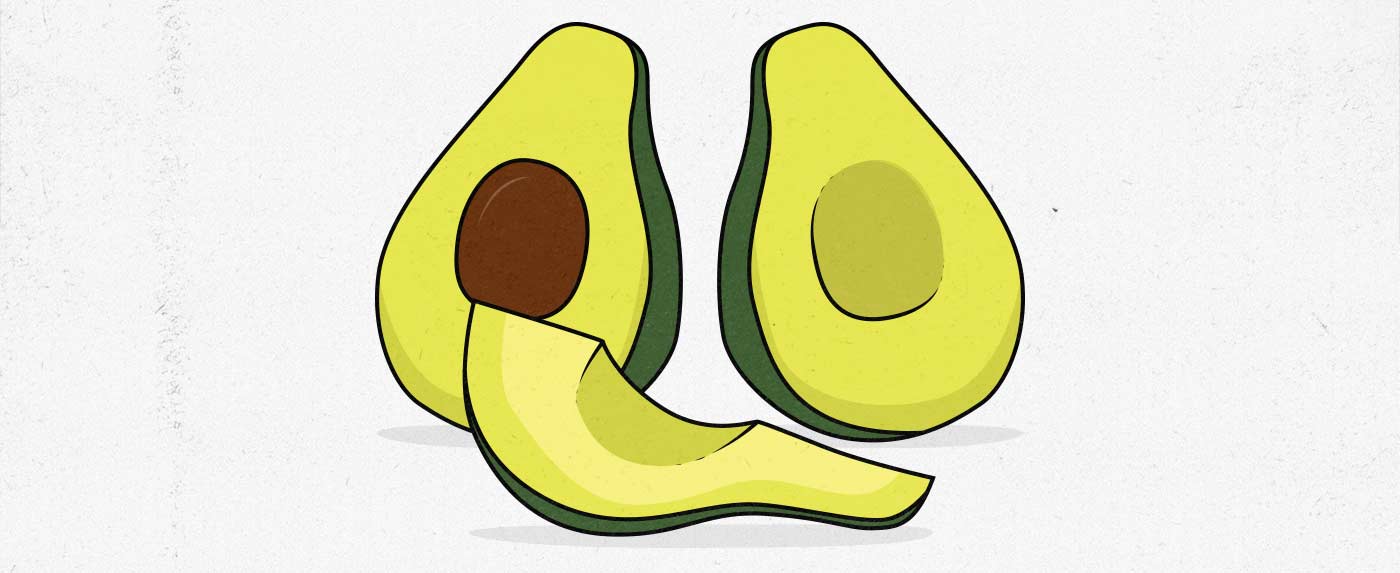
Eating very few carbs is really trendy lately, with popular figures like Joe Rogan speaking favourably about ketogenic diets, and Jordan Peterson recently switching to an all-meat diet. But despite the growing popularity of ketogenic diets, there was little research investigating whether they’re any good for building muscle. That’s where this new study comes in.
In this new study, they split up the participants into a ketogenic group and a higher-carb group. Both groups were put on a 4-day workout routine and instructed to eat in a calorie surplus, i.e., instructed to eat enough calories to gain weight. The ketogenic group lost 0.7 pounds of muscle, the high-carb group gained three pounds of muscle. Huge win for the carb group, right? Not so fast.
There’s a ton of research proving how effective carbs are for building muscle, so it’s no surprise that the higher-carb group gained a bunch of muscle. What’s cool is that they even lost some fat while bulking up (which isn’t uncommon in these types of studies). The ketogenic group was more interesting. They lost muscle. And so the researchers concluded that ketogenic diets are not effective for bulking up. However, there’s a huge flaw here that completely undoes this finding—the ketogenic group wasn’t even able to get into a calorie surplus.
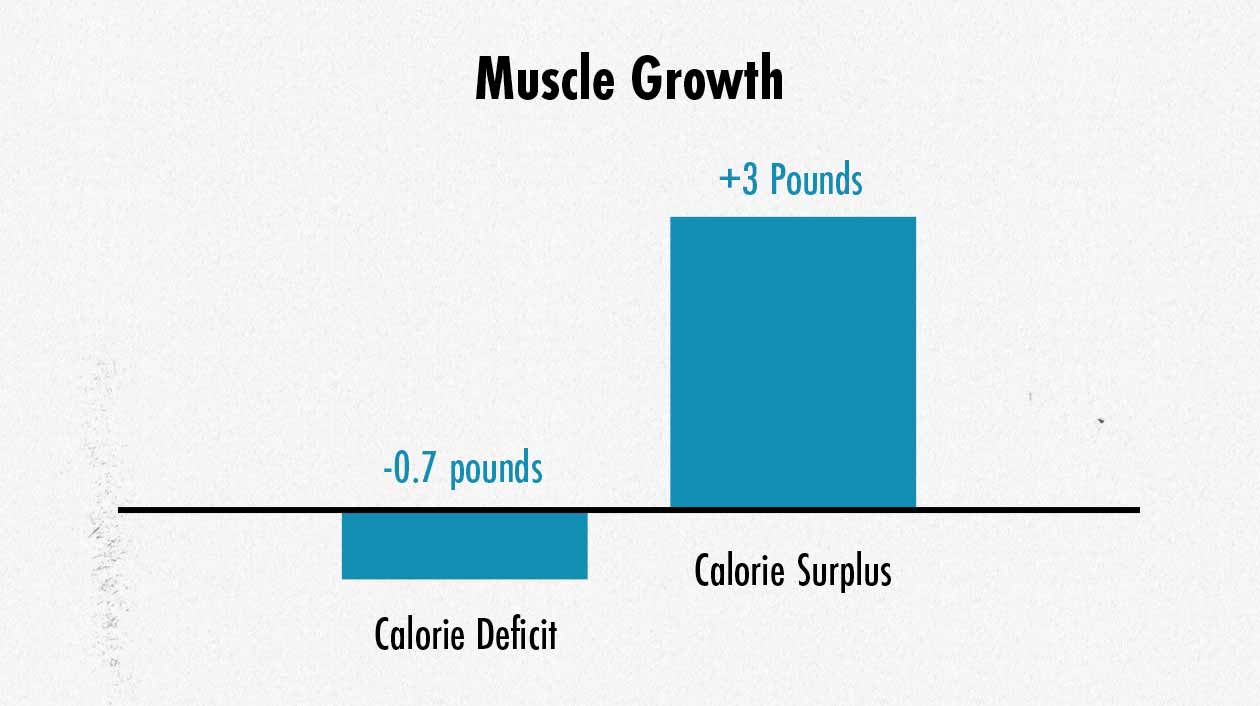
It turns out that the ketogenic diet is so effective at getting people into a calorie deficit that even when the ketogenic participants were instructed to gain weight, they simply couldn’t. It sounds like a problem that many of us hardgainers can relate to! So if it were me, I’d say this study mainly shows that being in a calorie surplus (aka bulking) helps us build muscle.
This study also shows us, though, that it might be very hard to get into a calorie surplus while following a ketogenic diet, and that could be a real problem for us hardgainers. On the other hand, this hints at ketogenic diets being a pretty cool tool for overweight people trying to lose fat. Even when people try to overeat on the ketogenic diet, they aren’t able to.

So I would be inspired by the higher-carb group in this study. They ate plenty of carbs, they were able to get into a calorie surplus, and they succeeded in building muscle while losing fat. Total win.
For more, see our article on whether the ketogenic diet is good for bulking.
Are 5×5 Workouts Good for Building Muscle?
A recent meta-analysis leads us to think that, no, five reps per set is too low of a rep range to stimulate a maximal amount of muscle growth per set. However, it’s right on the cusp of being effective, and so 5×5 routines probably aren’t terrible, either, just not ideal.
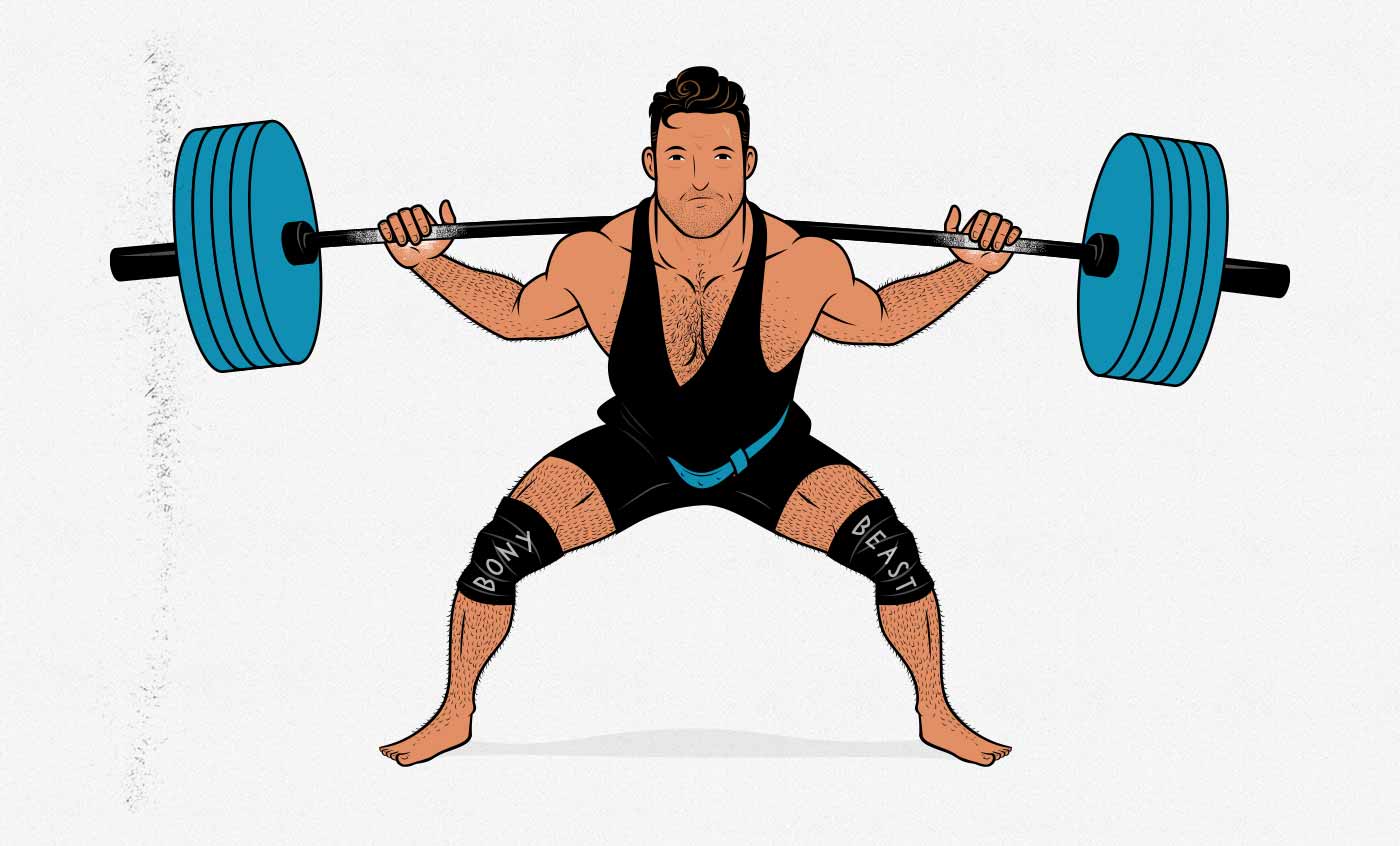
This new meta-analysis evaluated fourteen studies to tease out the relationship between rep ranges, volume, and muscle growth. It found that sets of 6–20 reps were ideal for stimulating muscle growth, whereas lower rep ranges only stimulated about half as much growth per set. However, obviously we’re dealing with a range here. Perhaps sets of ten reps stimulate maximal growth, sets of six stimulate nearly as much, sets of five stimulates a bit less, and then by the time we get to singles, the muscle growth is greatly reduced.
To put this meta-analysis into context, this study found that lifters doing heavy bench press sets (2–6 reps) had to do a whopping 24 sets per week in order to maximize muscle growth, whereas lifters doing moderately heavy sets (8–12 reps) only had to do thirteen sets. What we’re seeing is that moderate-rep sets stimulate almost twice as much muscle growth as heavy sets. This means that if you’re including very heavy sets in your workout program, those sets would only give you half a volume point. We’d need to spend much more time lifting.
This is where the news gets bad for a lot of popular strength programs. I’ve seen 5-rep sets being advertised as the perfect blend of size and strength. We can now say, without much doubt, that this simply isn’t true. In fact, 5-rep sets stimulate measurably less muscle growth while fatiguing us just as much, and while benefitting from longer rest times. It’s a very inefficient way to build muscle. The workouts are longer, more tiring, harder to recover from, and less good at stimulating muscle growth.
For example, in your typical 5×5 routine, such as Stronglifts 5×5, where you do 5–10 sets of the bench press per week, that’s not nearly enough volume to maximize muscle growth, but it’s also fairly hard to recover from and takes quite a lot of time.
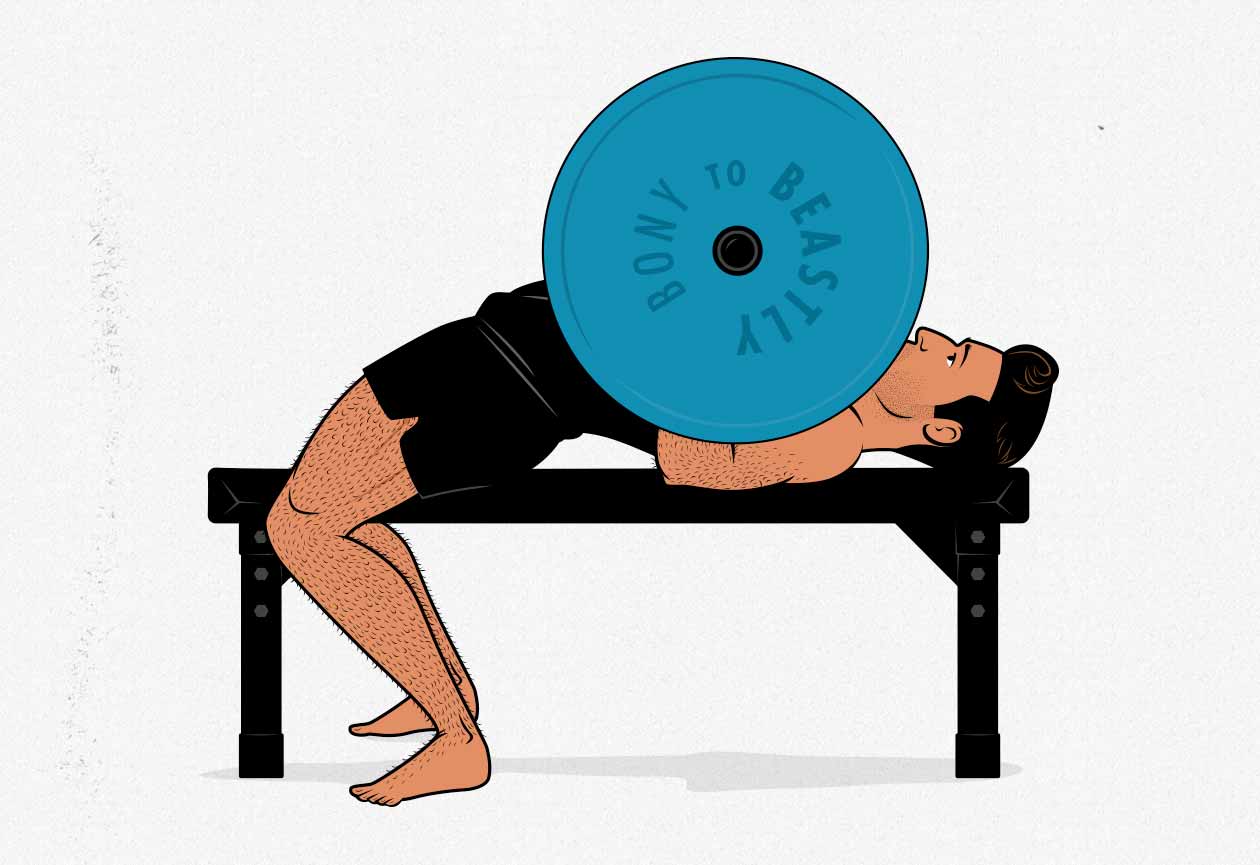
Mind you, these strength programs aren’t designed with muscle growth in mind, they’re designed to give us practice lifting heavy weights, which gives us something called neural gains—an improved ability to lift heavy with the muscle we already have. By the end of a 5×5 program you’d expect to look about the same but to be able to lift a bunch more weight, and these programs do deliver on that promise.
Now, we always need to watch out for putting too much stock into a single new study. However, this isn’t a single new study, this a meta-analysis of all fourteen studies examining this topic. Furthermore, this isn’t even a controversial finding. For example, Schoenfeld’s 2016 study also showed greater muscle growth from doing three sets of 8–12 reps when compared with doing three sets of 2–4 reps. There’s also his famous study about how powerlifters had to train for over an hour, doing eight sets of three, in order to match the muscle growth that bodybuilders got in ten minutes doing three sets of eight. The powerlifters felt wrecked after the workout because they’d exceeded their maximum recoverable volume, whereas the bodybuilders were fresh and ready for more.
For more, here’s our article about whether strength training is good for gaining muscle size. But perhaps more usefully, here are our articles on hypertrophy training and how many reps we should do to build muscle.
Conclusion
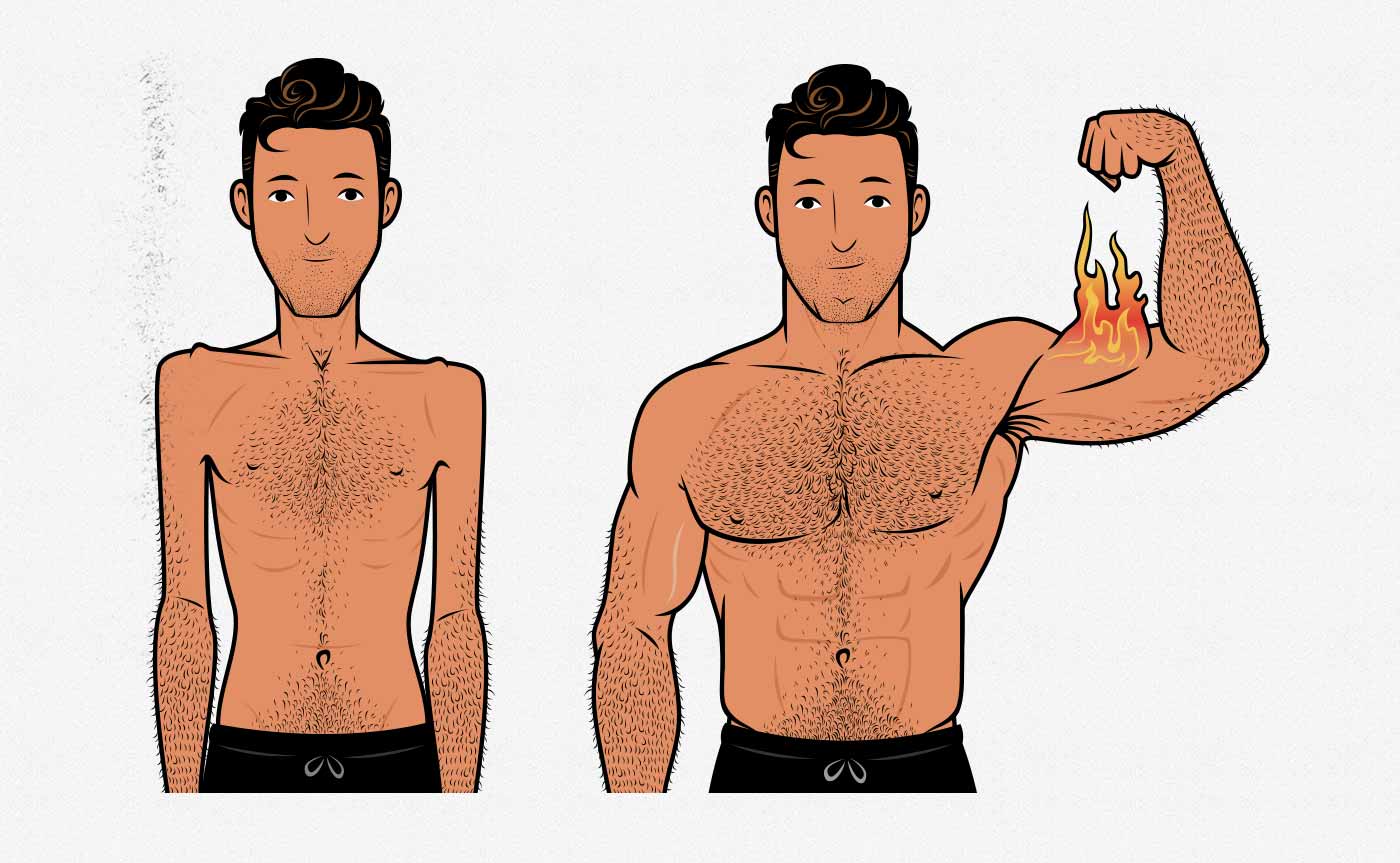
As always, if you like our articles and you’re ready to start bulking up, I think you’d love our Bony to Beastly Program. We’ve designed the entire program for gaining muscle size, ranging from the workouts to the diet, and even to lifestyle and sleep.

